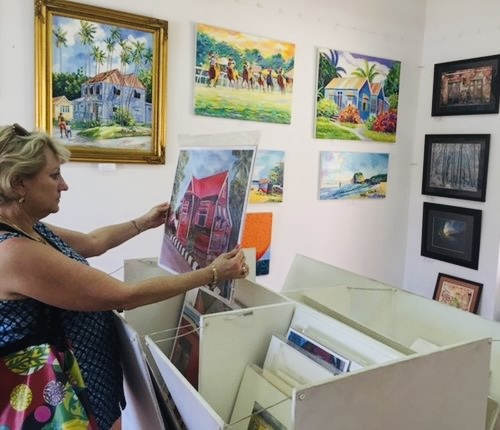by Carolyn Edlund
An existing customer base can be a goldmine for an artist in business. Don’t overlook this important asset and the potential for ongoing sales.

It’s a well-established fact that individuals who have previously purchased your work are far more likely to do so again compared to those who haven’t. This reality, coupled with the considerable time and resources required to acquire new customers, underscores the importance of cultivating strong relationships with your best potential prospects—your current collectors.
The value of your existing customer base can’t be overstated. Not only are they more inclined to make repeat purchases, they tend to spend more on each purchase. The cost of marketing to your base of collectors is significantly lower than that of attracting new customers. You don’t have to approach them “cold” or convince them of the quality and desirability of your work, since you have already established a level of trust. And, having made purchases in the past, they are familiar with what you make and what they can expect.
It’s not uncommon that artists neglect to follow-up with their buyers. Yet this simple act of omission can cost a small creative business a lot of money. Have you been guilty of this oversight? You may be missing out potential sales, the opportunity to grow even more valuable relationships, and the referrals that your true fans can provide. This is particularly true for artists who sell directly from their studios, since they are often face-to-face with buyers, and have direct access to collector information. There really is no excuse for failing to maintain contact by following up on a regular basis.
To make sure that you are emphasizing follow-ups in your art business, consider building them into your marketing strategy. After a sale is made, get in touch with an immediate expression of gratitude. You will want to reach out to new buyers within a week. One great way to begin an ongoing relationship is by sending a handwritten thank-you note. You may want to use custom notecards that feature your artwork. This first gesture should focus solely on expressing your appreciation, without any additional sales pitches or requests.
Several weeks later, you may reach out again to build a stronger connection. Send an email to the new customer, inviting them to connect on social media. Offer them the chance to subscribe to your regular updates or new release announcements. This keeps the lines of communication open and allows you to share information and cultivate them as fans on a regular basis.
A few months after the initial purchase, you can add a personal touch with a physical mailing, such as a postcard or an invitation to an upcoming exhibition, pop-up show or other event. When a collector has made a substantial purchase, you might consider including a small gift, such as a set of notecards featuring your art.
Your best customers deserve special consideration and attention. Make it a point to contact these individuals several times each year, with a note to catch up, send birthday, holiday or anniversary greetings. As you build relationships with these collectors, you may make personal phone calls, or you could drop a card in the mail. And, keep special collectors as a separate segmented list of VIPs in your email records. Then, you can access that elite list easily to send out email campaigns that offer more to the group which have been your best customers.
Throughout this process, staying authentic and consistent is crucial. Personalization goes a long way in making collectors feel valued, so tailor your communications whenever possible. Avoid the temptation to always ask for something in return. Focus instead on giving and showing appreciation.
While it’s important to put thought into your communications, sincerity matters more than flawless execution. Your collectors will appreciate the gesture of an artist they admire reaching out, even if the message is brief or imperfect.
By implementing this strategy to nuture your existing collector base, you will be able to create lasting impressions, eliciting loyalty and potentially increasing repeat sales. The effort you invest in cultivating collector relationships is not just about immediate returns. It’s also an investment in the long-term success and sustainability of your art business. In the end, the bonds you forge with your collectors can become as valuable and enduring as the art itself.


Speak Your Mind